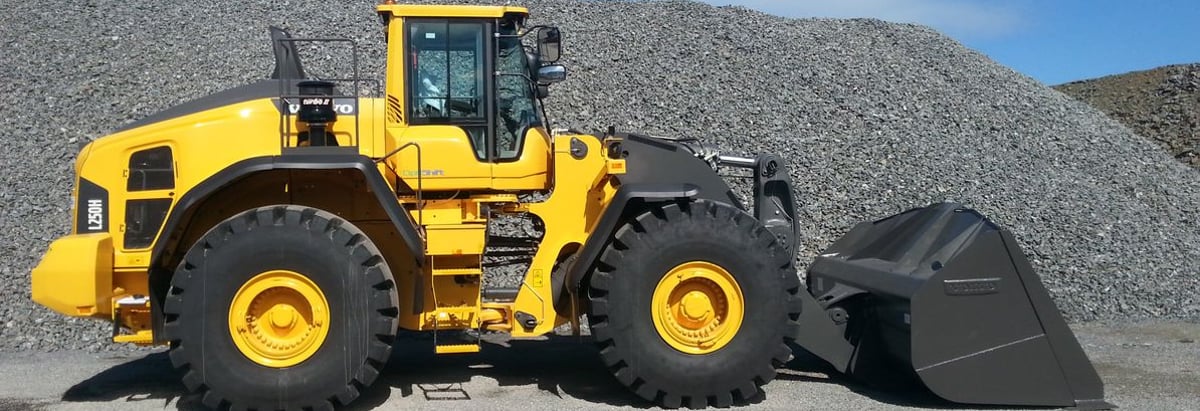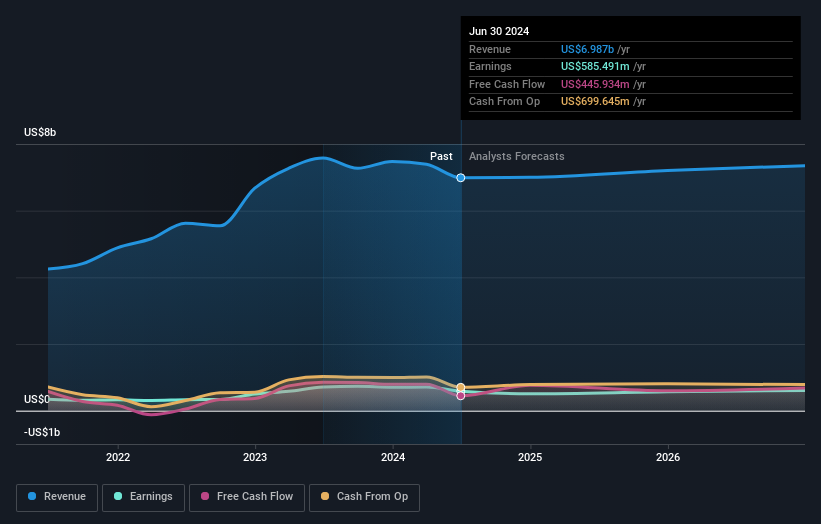- South Korea
- /
- Machinery
- /
- KOSE:A241560
While individual investors own 30% of Doosan Bobcat Inc. (KRX:241560), public companies are its largest shareholders with 46% ownership

Key Insights
- Significant control over Doosan Bobcat by public companies implies that the general public has more power to influence management and governance-related decisions
- The top 2 shareholders own 53% of the company
- Institutional ownership in Doosan Bobcat is 24%
Every investor in Doosan Bobcat Inc. (KRX:241560) should be aware of the most powerful shareholder groups. And the group that holds the biggest piece of the pie are public companies with 46% ownership. Put another way, the group faces the maximum upside potential (or downside risk).
Meanwhile, individual investors make up 30% of the company’s shareholders.
Let's delve deeper into each type of owner of Doosan Bobcat, beginning with the chart below.
Check out our latest analysis for Doosan Bobcat

What Does The Institutional Ownership Tell Us About Doosan Bobcat?
Institutions typically measure themselves against a benchmark when reporting to their own investors, so they often become more enthusiastic about a stock once it's included in a major index. We would expect most companies to have some institutions on the register, especially if they are growing.
We can see that Doosan Bobcat does have institutional investors; and they hold a good portion of the company's stock. This can indicate that the company has a certain degree of credibility in the investment community. However, it is best to be wary of relying on the supposed validation that comes with institutional investors. They too, get it wrong sometimes. If multiple institutions change their view on a stock at the same time, you could see the share price drop fast. It's therefore worth looking at Doosan Bobcat's earnings history below. Of course, the future is what really matters.

Hedge funds don't have many shares in Doosan Bobcat. The company's largest shareholder is Doosan Enerbility Co., Ltd., with ownership of 46%. In comparison, the second and third largest shareholders hold about 6.5% and 1.9% of the stock.
After doing some more digging, we found that the top 2 shareholders collectively control more than half of the company's shares, implying that they have considerable power to influence the company's decisions.
While it makes sense to study institutional ownership data for a company, it also makes sense to study analyst sentiments to know which way the wind is blowing. There are plenty of analysts covering the stock, so it might be worth seeing what they are forecasting, too.
Insider Ownership Of Doosan Bobcat
The definition of an insider can differ slightly between different countries, but members of the board of directors always count. Company management run the business, but the CEO will answer to the board, even if he or she is a member of it.
Insider ownership is positive when it signals leadership are thinking like the true owners of the company. However, high insider ownership can also give immense power to a small group within the company. This can be negative in some circumstances.
Our most recent data indicates that insiders own less than 1% of Doosan Bobcat Inc.. Keep in mind that it's a big company, and the insiders own ₩541m worth of shares. The absolute value might be more important than the proportional share. It is always good to see at least some insider ownership, but it might be worth checking if those insiders have been selling.
General Public Ownership
With a 30% ownership, the general public, mostly comprising of individual investors, have some degree of sway over Doosan Bobcat. This size of ownership, while considerable, may not be enough to change company policy if the decision is not in sync with other large shareholders.
Public Company Ownership
We can see that public companies hold 46% of the Doosan Bobcat shares on issue. This may be a strategic interest and the two companies may have related business interests. It could be that they have de-merged. This holding is probably worth investigating further.
Next Steps:
I find it very interesting to look at who exactly owns a company. But to truly gain insight, we need to consider other information, too. Consider risks, for instance. Every company has them, and we've spotted 1 warning sign for Doosan Bobcat you should know about.
Ultimately the future is most important. You can access this free report on analyst forecasts for the company.
NB: Figures in this article are calculated using data from the last twelve months, which refer to the 12-month period ending on the last date of the month the financial statement is dated. This may not be consistent with full year annual report figures.
New: Manage All Your Stock Portfolios in One Place
We've created the ultimate portfolio companion for stock investors, and it's free.
• Connect an unlimited number of Portfolios and see your total in one currency
• Be alerted to new Warning Signs or Risks via email or mobile
• Track the Fair Value of your stocks
Have feedback on this article? Concerned about the content? Get in touch with us directly. Alternatively, email editorial-team (at) simplywallst.com.
This article by Simply Wall St is general in nature. We provide commentary based on historical data and analyst forecasts only using an unbiased methodology and our articles are not intended to be financial advice. It does not constitute a recommendation to buy or sell any stock, and does not take account of your objectives, or your financial situation. We aim to bring you long-term focused analysis driven by fundamental data. Note that our analysis may not factor in the latest price-sensitive company announcements or qualitative material. Simply Wall St has no position in any stocks mentioned.
About KOSE:A241560
Doosan Bobcat
Engages in the design, manufacturing, marketing, and distribution of compact construction equipment for construction, landscaping, agriculture, grounds maintenance, utility, and mining industries in North America, Europe, the Middle East, Africa, Asia, Latin America, and the Oceania.
Very undervalued with excellent balance sheet.
Market Insights
Community Narratives



